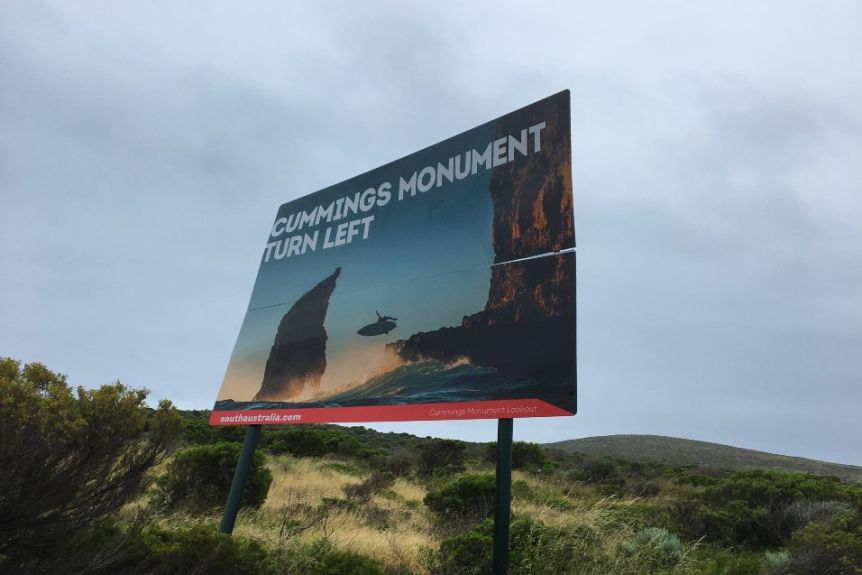Surfers from South Australia’s Eyre Peninsula have destroyed a new tourism sign and hurled online threats at a photographer for exposing a local surf break.

The tourism sign directs drivers to the Cummings monument, and shows a photo by Kane Overall of an adjacent surf break and coastal cliffs. Within 24 hours the leg of the sign was cut with an angle grinder.
‘The sign was an investment by the South Australian Tourism Commission (SATC) to give people the opportunity to stop, get out of the car, take a bit of a breather, and have a look at our amazing coastline,’ said Sondra Stewart, tourism development manager for Regional Development Australia Eyre Peninsula and Whyalla. The damaged sign will be removed, as it poses a safety risk.
Locals on the Eyre Peninsula are fiercely protective of the relatively uncrowded world class surf breaks dotted along the remote coastline, with the area earning a reputation for confrontations towards travelling photographers and surfers. Most travelling surf photographers have heard the stories and exercise discretion when visiting the area.
Overall, speaking with ABC, said he captured the image two years ago and sold it to the SATC to use in their media gallery. He uploaded the image to Instagram in an effort to bring awareness to the Fight for the Bight campaign, a successful environmental movement to prevent Norwegian oil company Equinor from drilling in the Great Australian Bight. He said it ‘kind of sucks’ the SATC used his image without his knowledge, resulting in random online threats.
‘I didn’t know [the image] was going to be used on the sign, and then I just started getting hit up on Instagram and tagged in lots of negative comments,’ he said. ‘I’ve had the odd death threat, “don’t ever come back here, we’ll damage your equipment or damage your car or hurt you”.’
Overall adds he’s careful not to geotag surfing locations, as the exposure of breaks can contribute to overcrowding the area. ‘I’d just rather people go and find the spots themselves. They are really great, but they’re also really quiet, and I’d like to keep it that way as well.’
Streaky Bay surfer, Jeff Schmucker, who offers ‘protection’ for visiting surf media and has previously had run-ins with locals (in 2009 his letter box was blown up in response to running a surf contest), understands the localism but points out there is big hypocrisy.
‘It’s a resource (waves). There’s quite a few users that want to use it and obviously the more users that want to use it the less there is for everybody,’ he said. ‘The proponents against this have Instagram accounts that have photos of the waves on the west coast, and those photos are available online to old mate in a bar in San Francisco within seconds. I think that has more damage than a sign.’
While the area is famous for being unkind to photographers, the South Australian desert has become a popular destination for surf films, which suggests the vigilante enforcer mentality is either fading or lacks consistency.
A local Elliston surfer told the ABC he’s surprised the tourism bureau even tried to showcase the region. ‘Years ago, you wouldn’t even want to be pulling out a camera on this coast,’ he said. It’s dangerous to even promote the locations, he said, as an inexperienced surfer may be tempted to careen down the unstable cliff face and plunge into the unforgiving Southern ocean.
A landlocked European backpacker fresh from a few surf lessons in Byron Bay and now fancies themselves as a soul-arching wave rider, for instance, may be heading across the Nullarbor, sees the sign, and decides a quick surf around Elliston is the perfect way to break up the long road trip.





Be First to Comment